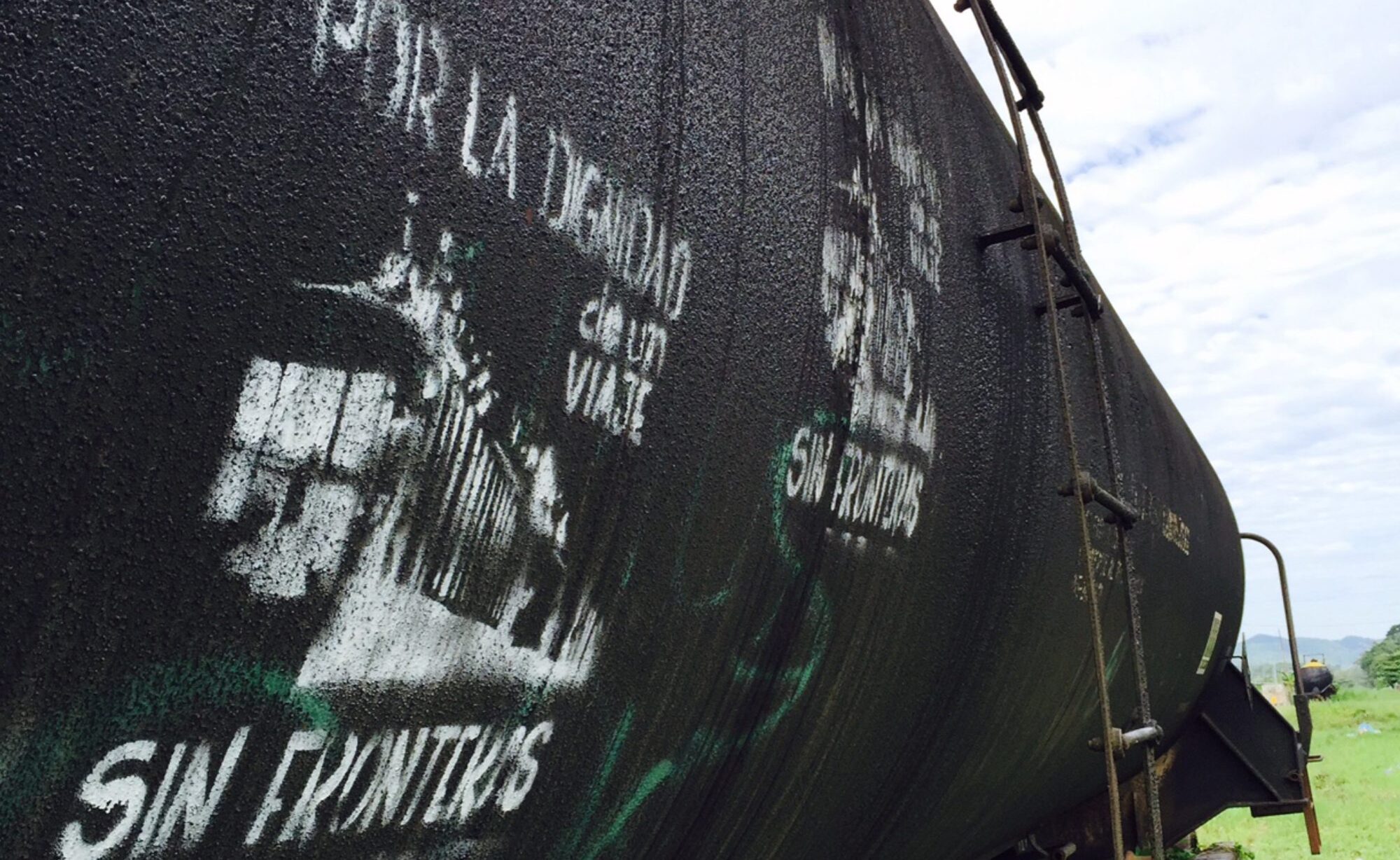Joshua Garcia’s pulse quickens every time he approaches a U.S. Border Patrol checkpoint. The staggered speed-limit signs on the side of the highway indicate that he should slow down from 40 to 30 to 20 miles per hour. Due to his experiences in the past, and unlike most other drivers, he follows the speed limits exactly.
Garcia has done nothing wrong. He is also a U.S. citizen. But he feels that sense of dread. It is like that feeling of trepidation pulling into, say, that checkpoint on the Colorado border where armed, uniformed officials could order you to pull over. Maybe this time, as on many occasions, they would just wave him through. Perhaps he’d be able to continue on his way back to Tucson as the harsh afternoon light softens into dusk. He hopes that is the case, because he has two kids from the youth council with him.
Sebastian, who is 17, is asleep in the back seat. Fifteen- year-old Amelia is pointing to a sign that says there are dogs on duty. “I want to pet the dog,” she says. Garcia looks at Amelia and jokes, “They’re working dogs, you’re not supposed to pet them.”
In addition to feeling nervous about approaching the checkpoint, there is also exhilaration and afterglow from a great day. That morning, when they drove from Tucson to the Tohono O’odham Nation, a beautiful and muscular wildcat walked across the two-lane road in front of them. “A mountain lion,” the kids murmured. They had to look twice to make sure. And then they were sure. It was the first time either of them had seen one. It was the first time for Garcia, too, the adult leader who had spent thousands of hours walking in the desert. There is something about seeing an elusive and endangered animal, free and wild in its own habitat, that stays with you a long time. Conversations about the lion dominated for the rest of the day. Garcia believes that it was because of the lion that many in the group wanted to walk toward Baboquivari Peak, on a path that climbed to one of the caves where Itoi, the Tohono O’odham creator, resided. From the sacred cave there was a sweeping view of the O’odham aboriginal land that extended as far as the eye could see, including hundreds of miles into Mexico. For a moment there was no international border dividing the land, only the beauty one has of suddenly seeing a vast, inspiring landscape. At the cave they sang to the mountain. It was that sort of day, reconnecting with the living Earth with a sort of reverence that goes against the grain in much of the contemporary United States.
They can see the authorities wave another car forward. They can hear and smell the idling engines. It was another abnormally hot day during the year 2015, which would be the hottest year in recorded history up until that point (only to be surpassed by the very next year). Garcia puts his truck into gear and inches ahead. There are orange striped signs in the middle of the road. There is a stop sign with a trio of orange flags on top, slightly flapping around in the breeze. There are well-armed Homeland Security agents in forest-green uniforms observing his vehicle as he pulls forward into this modern-day bum blockade, located 45 miles north of the international border.
Read more of this excerpt here as published in the Tucson Weekly.
